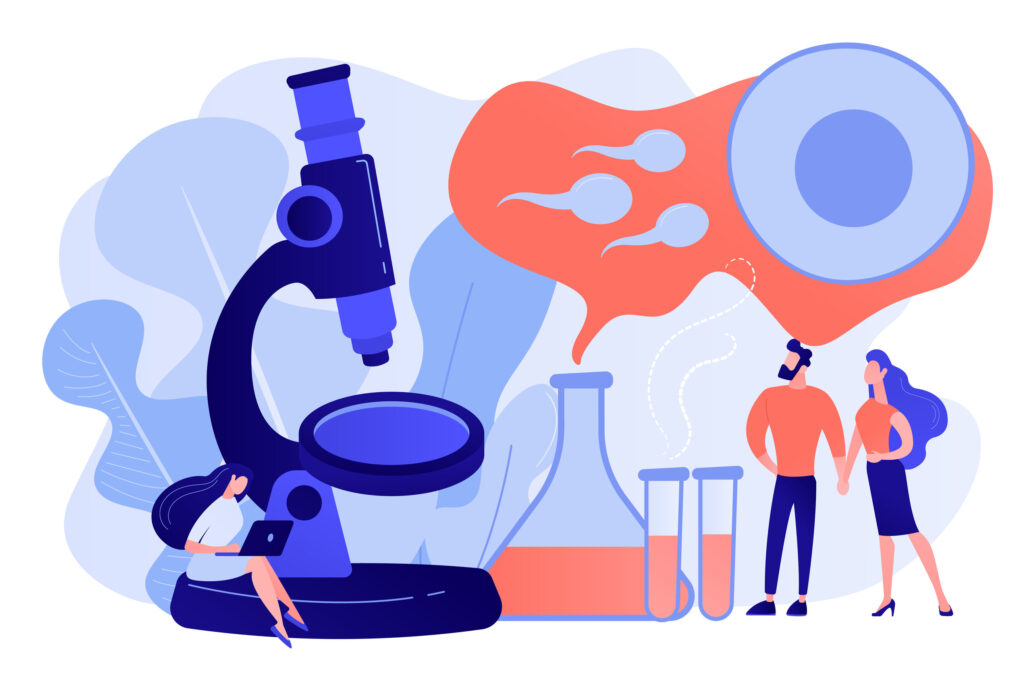Beyond period pain: an evidence-based guide to endometriosis
Posted on 25th April 2023 by AMINA BEROUR

Every March, Endometriosis Awareness Month takes place across the world. As we have just come to the end of this year’s awareness month, you have probably come across information about this complex and often misunderstood condition, which affects millions of women globally. But what exactly is endometriosis and why is it vital to continue the dialogue surrounding it even beyond the month of March?
What is endometriosis?
Endometriosis is a chronic disease characterized by inflammation due to the abnormal presence of the endometrial tissue (which normally lines the inside of the uterus) outside of the uterine cavity.
This ectopic tissue responds to hormones similarly to the endometrium, resulting in pain symptoms such as dysmenorrhea (painful period), dyspareunia (painful sexual intercourse), dyschezia (painful bowel movement), dysuria (painful urination), and chronic pelvic pain. (1)
Why is it so important to keep the conversation about it alive?
This condition affects up to 10 percent of women of reproductive age and has a global prevalence of over 170 million women. Endometriosis can have a significant impact on the quality of life, affecting various aspects such as their sexual life and social relationships.
In addition to physical pain, it can also cause psychological distress, such as depression and anxiety, negatively impacting the person’s mental health and wellbeing; furthermore, endometriosis has been linked to decreased work productivity which can affect a person’s financial stability and career. The economic burden of endometriosis is also not to be neglected.(1)
How it is diagnosed?
According to the most recent ESHRE guideline 2022 (2), key points to consider are:
- Clinicians should consider the diagnosis in women presenting with the pain symptoms we mentioned above, especially if they are associated with infertility.
- Clinical examination could be useful but let’s keep in mind that the diagnostic accuracy is low.
- Biomarker tests are not recommended.
- While endometriosis is often diagnosed using ultrasound imaging or MRI, it is essential to note that a negative result on these tests does not necessarily rule out the possibility of endometriosis.
- Other diagnostic methods such as laparoscopy might be necessary, especially in cases where symptoms are persistent.
How does endometriosis affect fertility?
Between 30 and 50 percent of women with endometriosis may suffer from infertility. This infertility may be caused by the inflammation, adhesions (bands of scar like tissue), damage to the fallopian tubes and ovaries, and altered quality of the eggs. (3)
When it comes to fertility treatment for endometriosis several options are available such as medical treatment, assisted reproductive techniques (ART) and laparoscopic surgery. Hormonal treatment is no longer recommended for fertility outcome. (2) A 2021 blog on Evidently Cochrane looks specifically at the latest evidence on keyhole surgery to treat infertility.
The best treatment for endometriosis-associated infertility is different for everyone; it depends on many factors such as age, other medical conditions and past pregnancies.
It is important to keep in mind that not all women with endometriosis will experience fertility issues, and that many of them may be able to conceive without the need of fertility treatments.
What are the treatment options and which one is the best?
When it comes to endometriosis treatment, it’s too broad a question to be discussed in one blog. So let’s try to cover some of the most important points regarding endometriosis management.
- Treatments are given to relieve symptoms, such as pain, which can be managed by non-steroidal anti-inflammatory drugs (NSAIDs) or other analgesics (either alone or in combination with other treatments), combined hormonal contraceptives, or surgery.(2)
- Fertility treatments have already been discussed in the previous fertility section.
- It is important to keep in mind individual variations when thinking about treatment outcome, therefore there is no such thing as the best treatment option for everyone.
- It is also important to keep an eye on the ongoing research, as endometriosis remains a global health concern that hasn’t been fully elucidated, and still requires further research to better our understanding of this condition, and potentially improve patient outcomes.
Key points to remember…
- We need to keep the conversation about endometriosis alive, even beyond the month of March.
- It is important to refer to reliable evidence and up-to-date resources when trying to answer endometriosis questions, such as the Cochrane Library and clinical guidelines.
- Not all women with endometriosis will experience difficulties in conceiving.
- There is no such thing as one best treatment option for all.
Images featured within the blog are Designed by vectorjuice / Freepik
References
- Della Corte L, Di Filippo C, Gabrielli O, Reppuccia S, La Rosa VL, Ragusa R, et al. The Burden of Endometriosis on Women’s Lifespan: A Narrative Overview on Quality of Life and Psychosocial Wellbeing. Int J Environ Res Public Health. 2020 Jun 29;17(13):4683.
- Becker CM, Bokor A, Heikinheimo O, Horne A, Jansen F, Kiesel L, et al. ESHRE guideline: endometriosis. Hum Reprod Open. 2022 Mar 4;2022(2):hoac009.
- Keyhole surgery to treat infertility associated with endometriosis: the latest evidence [Internet]. Evidently Cochrane. 2021 [cited 2023 Mar 26]. Available from: https://www.evidentlycochrane.net/keyhole-surgery-to-treat-infertility-associated-with-endometriosis-the-latest-evidence/
You may also be interested in this series of blogs on Evidently Cochrane (Cochrane UK’s blogging site) which were published in March 2021: My Endometriosis Question.




